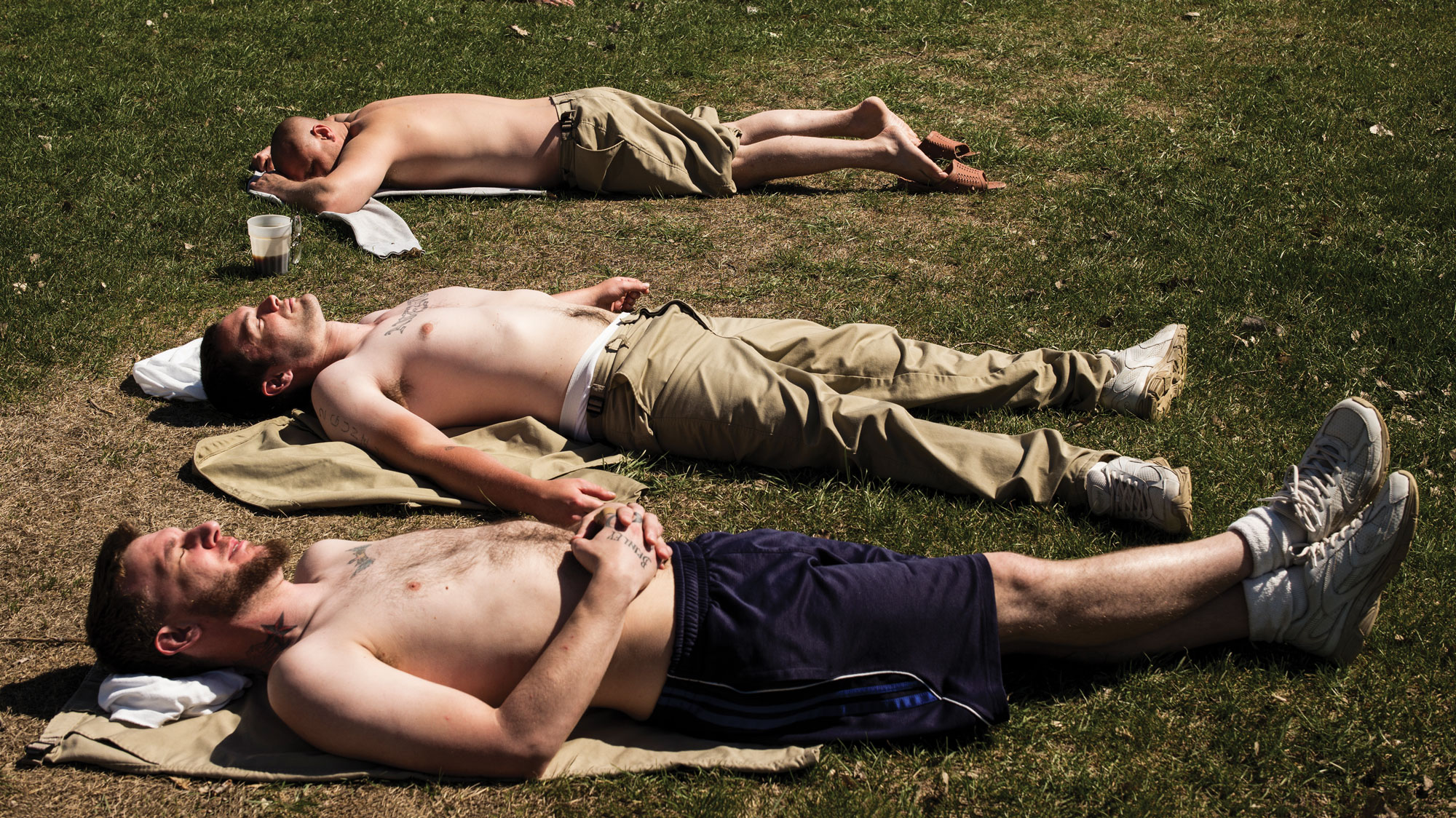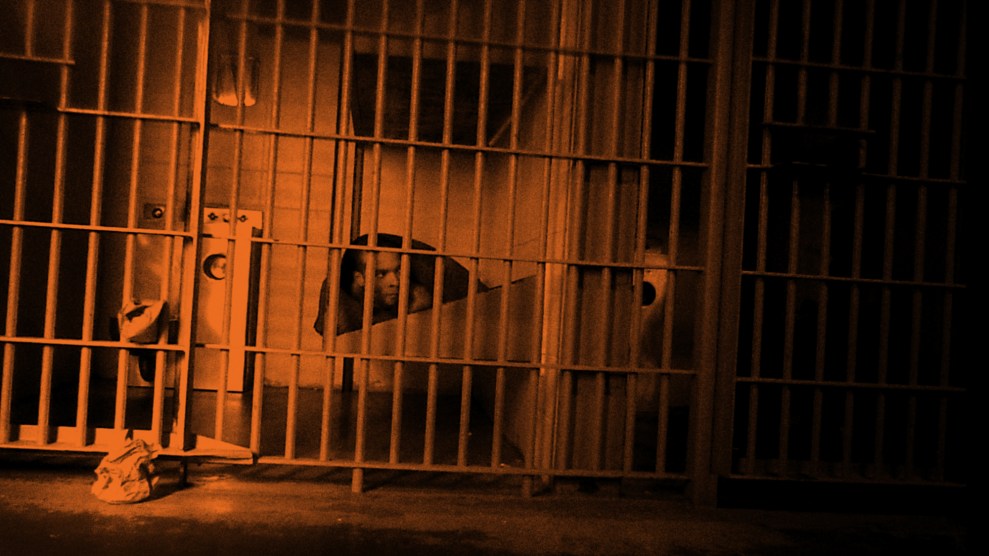Late one night in October 2015, North Dakota prisons chief Leann Bertsch met Karianne Jackson, one of her deputies, for a drink in a hotel bar in Oslo, Norway. They had just spent an exhausting day touring Halden, the maximum-security facility Time has dubbed “the world’s most humane prison,” yet neither of them could sleep.
Halden is situated in a remote forest of birch, pine, and spruce with an understory of blueberry shrubs. The prison is surrounded by a single wall. It has no barbed wire, guard towers, or electric fences. Prisoners stay in private rooms with en suite bathrooms and can cook for themselves in kitchens equipped with stainless-steel flatware and porcelain dishes. Guards and inmates mingle freely, eating and playing games and sports together. Violence is rare and assaults on guards are unheard of. Solitary confinement is almost never used.
By this point, Bertsch had been in charge of North Dakota’s Department of Corrections and Rehabilitation, which includes four adult prisons and one juvenile facility, for more than a decade, and Jackson had spent seven years as director of correctional practices. They’d left Bismarck feeling pretty good about their system, which prided itself on its humane practices and commitment to rehabilitation. But now, sitting in the glassed-in bar of the Radisson hotel with its view of the Oslo fjord, Bertsch began to cry. “We’re hurting people,” she said.
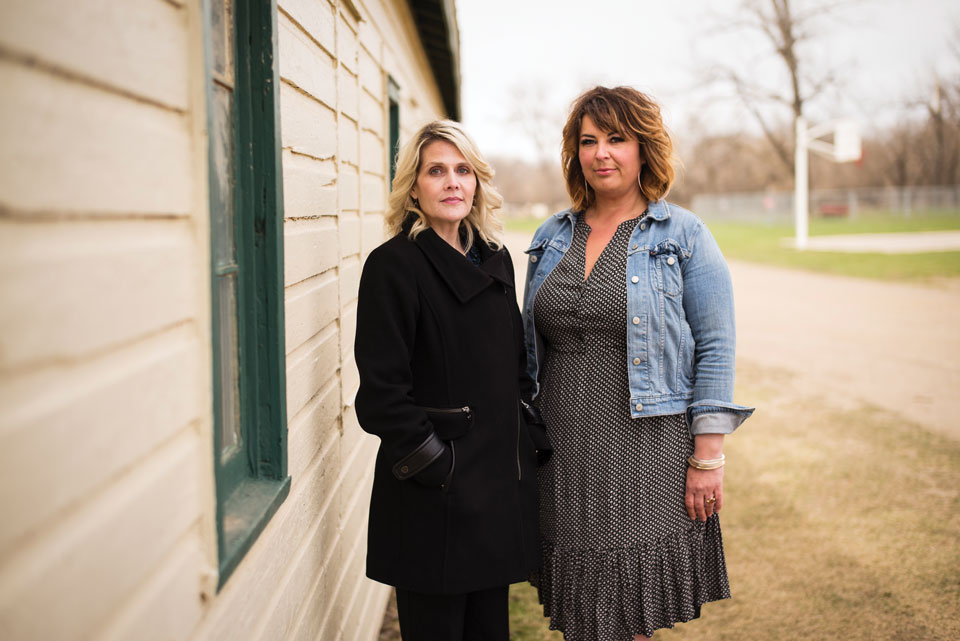
North Dakota prison officials Leann Bertsch, left, and Karianne Jackson aim to trim the long list of rules that get inmates into trouble “into something more like the Ten Commandments.”
Andy Richter
It is worth noting that Leann Bertsch is no pushover. With her ivory skin, flaxen hair, and chiseled cheekbones, she comes across as stoic and cool. She grew up on a farm in the eastern part of the state and served 21 years in the National Guard (retiring as a major) and eight years as a state prosecutor. She has run the prisons in this deep-red state under three Republican governors, and she moonlights as president of the Association of State Correctional Administrators. “No one who has met Leann or seen her in action would consider her a softie,” says John Wetzel, the association’s vice president and Pennsylvania’s secretary of corrections. “I would describe her as ballsy. Corrections has historically been a really misogynistic field, so when you see a woman in charge of a corrections system, and in charge of one of the more influential organizations in corrections, you know she’s got to be strong.”
But in Oslo that evening, Bertsch was uncharacteristically emotional. “It was definitely one of those moments where you’re rethinking everything,” she recalls. “I had always thought that we run a good system. We’re decent. We don’t abuse people. We run safe facilities with good programs. It was just like, ‘How did we think it was okay to put human beings in cagelike settings?'”
The Norway sojourn was the brainchild of Donald Specter, executive director of the Prison Law Office, a California public-interest law firm. In 2011, while visiting European prisons with a group of Maryland college students, Specter was struck by how profoundly the experience altered their views on incarceration. He decided to use some of the legal fees his office had won in its lawsuits against California prisons to bring state corrections chiefs, judges, and lawmakers on similar journeys.
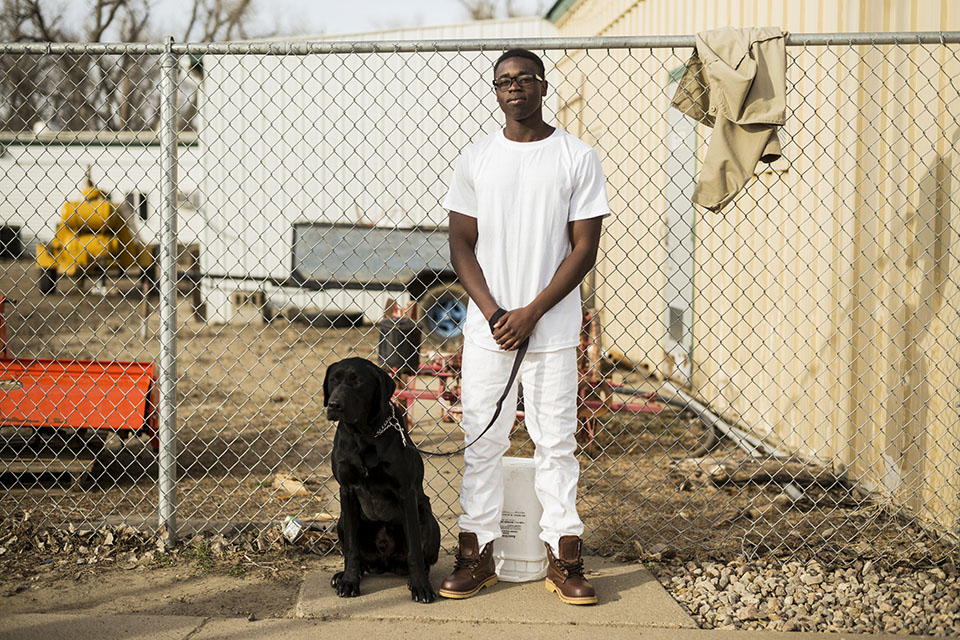
Francis Robert Ochiti, 21, with Oreo, at the Missouri River Correctional Center, a.k.a. “the Farm.” Oreo is part of the minimum-security prison’s Inmate Canine Assistance Program.
Andy Richter
Scandinavian prisons tend to elicit eye rolls from law-and-order types weaned on the punitive American model. Yet a growing number of state corrections officials are coming to the realization that our approach is ineffective, costly, and cruel. Fred Patrick, director of the Center on Sentencing and Corrections at the Vera Institute of Justice, cites the nation’s staggering recidivism rate—77 percent of inmates released from state prisons are rearrested within five years. “Once you realize that this system isn’t working well,” he says, “it’s fairly easy to pivot to: ‘How do we do something different?'”
That’s where Specter’s field trips come in. “To be so fricking optimistic that you think you can take some knuckle-dragging corrections guys like me over there and it’s going to change their perspective—you have to be a hippie to think that!” says Wetzel, who toured German prisons with Specter in 2013. But Specter’s ploy worked. “It really screws you up, because it changes you,” Wetzel adds. “I joke around with Don Specter. I’m like, ‘Fuck you, man! I can’t believe you did this shit to me!'”
And so, when Bertsch and Jackson returned home, it was with a radical new goal: “to implement our humanity.”
Along the highways of North Dakota, drivers are greeted by billboards advising people to “Be Nice” or “Be Kind.” Fittingly, the state’s incarceration rate of 240 prisoners per 100,000 residents is among the lowest in America, where the national average is 670. (Norway’s rate is 75.) And North Dakota’s prison population of about 1,821 is less than half that of its neighbor to the south. But the “be nice” ethos has come under strain in recent years as rising crime associated with the state’s fracking boom has provoked a new wave of tough-on-crime measures by the Legislature. The number of inmates in North Dakota prisons has increased by 28 percent since the end of 2011. A new 430-bed penitentiary complex built in 2013 was filled to capacity in six months.
By 2015, Bertsch was ready to ship excess prisoners to a private facility in Colorado. In Norway, though, she learned that the farther a prisoner is removed from his home community, the less likely he is to have visitors. And that’s a problem, because multiple studies suggest that inmates who have regular visitors are less likely to reoffend later. So instead of sending prisoners away, Bertsch seized on a suggestion from one of her maintenance employees and leased a ready-made “man camp”—the same portable modular units used to house roughnecks in the Bakken oil fields. The accommodations weren’t nearly as charming as the inmate cottages she and Jackson had toured at Norway’s Bastøy prison, a minimum-security facility located on a picturesque island. But they were a cheap way to ease overcrowding and give the men a dose of self-sufficiency.
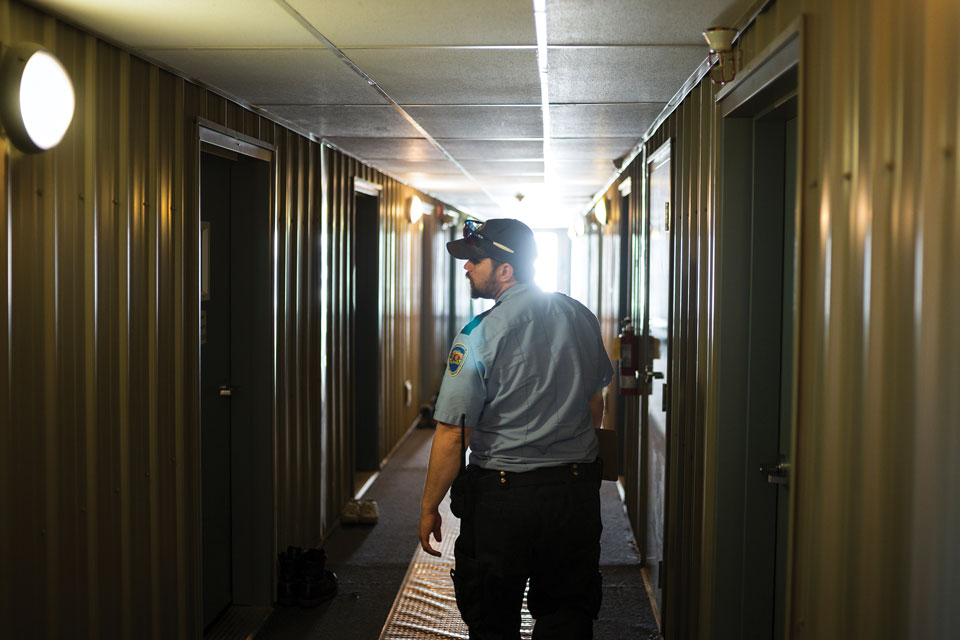
At the Farm, inmates can get private rooms to ease their transition to the outside world.
Andy Richter
I went with Jackson to see the trailers at the Missouri River Correctional Center, a minimum-security facility nicknamed “the Farm.” Located on the rural outskirts of Bismarck, it is surrounded by cottonwood trees and backs onto the river for which it is named. There are no fences. The day I visited, the grounds were swaddled in a sparkling blanket of snow; prisoners strolled along walking paths in puffy orange jackets, their breath steamy in the cold. Some of the men were placed here for lesser crimes; others are approaching the end of lengthy sentences that began in the maximum-security state prison.
Warden James Sayler and Joey Joyce, his deputy, were quick to embrace the Norway philosophy. They immediately began devising ways for inmates to earn more freedom—shopping excursions, day passes home, and even the right to wear civilian clothes on-site. They also scaled up an existing work-release program so more men could take real jobs. “Everybody down here is going to be out of here in a short amount of time,” Sayler says. “So how do you want ’em?” This is the crux of Norway’s approach: Once you accept that these people will one day be your neighbors, you might feel more invested in making sure they have the skills to get by on the outside.
Each of the Farm’s preexisting housing units packs 8 to 16 men into side-by-side berths in a space about the size of a subway car. But provided he is well behaved, an inmate approaching his release date can secure one of 36 private rooms, each of which shares a toilet and shower with just one other room. The chambers are modest—bed, desk, bulletin board—but for men unused to privacy, they’re pure luxury. More than one resident told me he couldn’t sleep the first few nights after moving in. The quiet was unsettling, and so was having a real mattress. “Kind of neat and kind of spooky at the same time,” says Rod Hegle, who was transferred to the Farm after more than two decades in the state penitentiary. Here Hegle has a room he can lock with his own key. He drives a forklift in the commissary and has a job in the welding shop. He’s eager to be approved for work release.
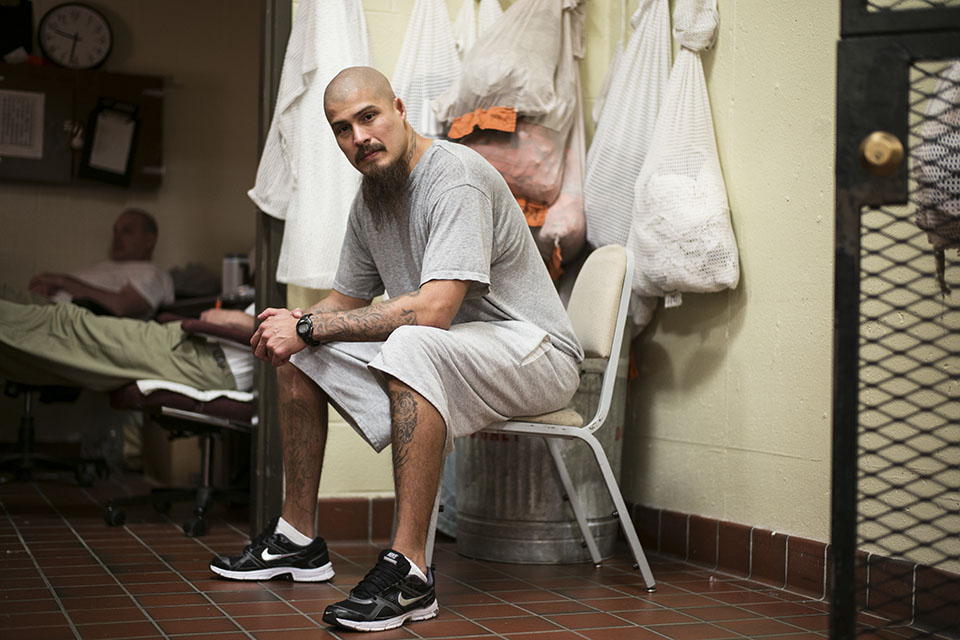
Glen Reiner, 28, was in and out of solitary at the state penitentiary up until prison chief Bertsch changed the rules. He now works in the prison laundry and is set for a parole hearing in November.
Andy Richter
But I also heard stories of prisoners so acclimated to confinement that even small freedoms were too much for them. This was particularly acute in the state penitentiary’s administrative segregation (solitary confinement) unit, one of the first places Bertsch and Jackson set out to reform. The seg unit was previously viewed, as it still is in many states, as a catchment for the most difficult prisoners—not just those who assaulted guards or fellow inmates, but also the crazy or defiant ones. A prisoner might get thrown in the hole for tattooing, mouthing off, or repeatedly refusing to tuck in his shirt. Getting in was easy, getting out hard.
That all changed after Norway. Throughout the prison system, Bertsch and Jackson are winnowing the list of minor infractions that earn prisoners a “shot.” As Jackson puts it, “Why is this a rule? Why is that important? Is the juice worth the squeeze?”
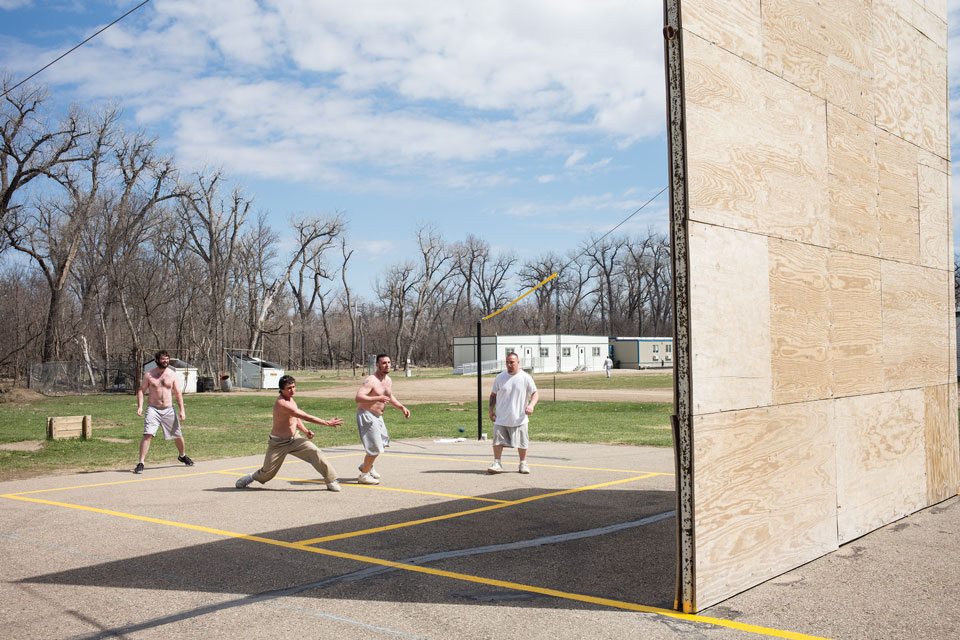
A handball game at the Farm, where “it’s so beautiful in the spring, it hurts your feelings,” Jackson told me.
Andy Richter
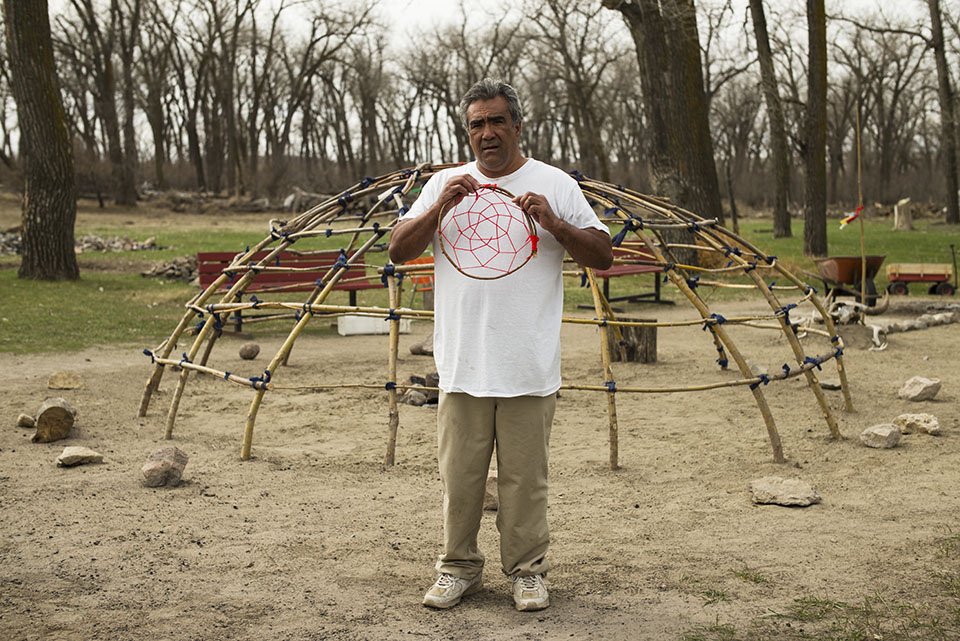
Native Americans are the largest minority in the North Dakota prisons. Here, William Nemery holds a dream catcher in front of a newly built sweat lodge at the Farm, where inmates gather on Saturday evenings for sweat sessions.
Andy Richter
Now the only way you’ll land in the hole is by endangering somebody, Bertsch says. Solitary stints are short, with clear expectations for how to get out, and the emphasis has shifted from punishment to treatment. Long-isolated prisoners are no longer dumped back into the general population—a new behavioral therapy unit gives them time to adjust to being around people.
Upon her return from Oslo, Jackson, a feisty, bighearted woman whose warmth provides the counterpart to Bertsch’s cool demeanor, immediately set to work combing through the solitary rolls, flagging candidates for transition into the general population: “I was like, ‘Here’s all the mental illness. Here’s who’s in here for chronic failure to follow rules.'”
Over in the behavioral modification unit, I meet Jeremy Isaac Rodriguez Rios, a 20-year-old with a shaved head, dark eyes, and finger tattoos. He’s two years into a 45-year bid for a double murder and has spent more than half that time in segregation, locked down 22 to 23 hours a day. Rios admits he’s quick to throw a punch, but he says the prison counselors are helping him learn to defuse potential conflicts. “You have to bring yourself in first: I feel anxious and disrespected when you say that,” he explains. “Those situations where they say ‘bitch’ or ‘punk’ to me, I try to verify—am I in danger? Or can we talk it out?”
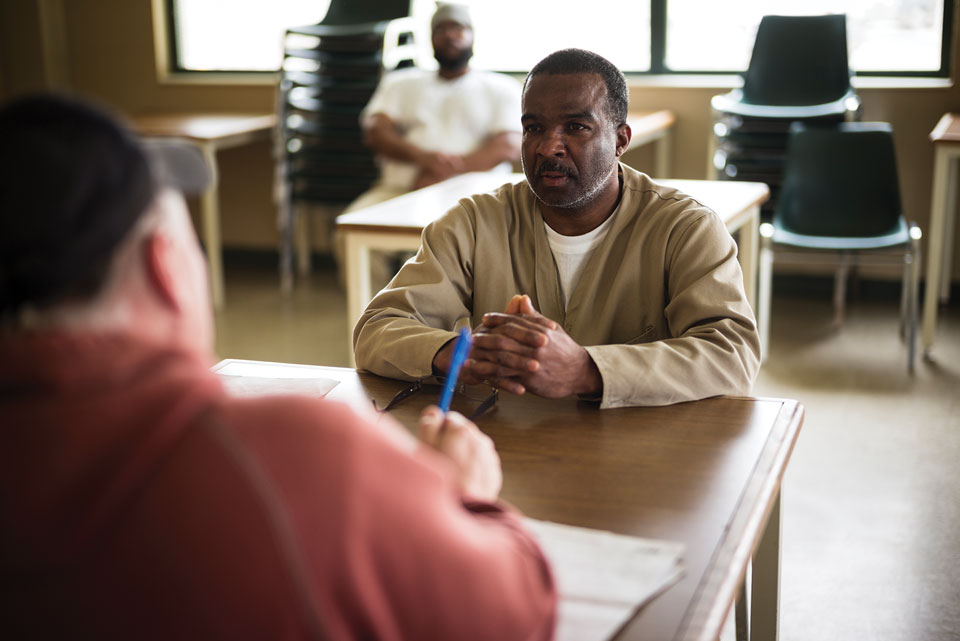
Ronnie Simons interviews for an off-site job laying sandbags along the Missouri River. “Everybody is going to be out of here in a short amount of time,” the warden explains. “So how do you want ’em?”
Andy Richter
Another 20-year-old, Michael Taylor, just arrived here after a month in the highly restrictive “acute intervention” wing. His hands won’t stop shaking. “I’m super paranoid,” he tells me. He’s hoping he can stay in the behavioral unit another month or two. “Even though it sucks being back here,” Taylor says, he likes the therapy sessions—and the “treatment ladies.”
The day-to-day population of the seg unit is now less than one-third of its pre-Norway peak. Since the new policies were put in place, prison officials report sharp declines in inmate violence and threats against staff, and also in the use of force by staff against inmates. “When the environment feels less aggressive and contentious,” Jackson says, “you’re safer.”
North Dakota has advantages as a laboratory for correctional reforms. Like Norway, it is sparsely populated and relatively homogeneous—race-based prison gangs hold little sway here. Another advantage, Don Specter told me, is simply that the state government is sufficiently small that it can be responsive to the exertions of a visionary leader. Yet Bertsch and Jackson have no illusions about transforming their system into a corrections utopia overnight. “You have to pace yourself,” Bertsch says.
The Norwegian principle of “dynamic security” posits that warm relationships between inmates and staff reduce the potential for violence. American prisons typically try to create safe conditions by means of oppressive rules, random searches, and the threat of additional punishment. Transitioning from one approach to the other requires a profound paradigm shift and the ability to sell front-line prison workers on a brand new mindset. “How do you get somebody who thinks they’re in law enforcement to figure out you need to be more of an empath, more of a social worker, a friend, and a mentor?” Jackson asks.
The correctional officers I met at the state penitentiary, ex-military all, weren’t outwardly hostile to the idea of cultivating relationships with prisoners, but it clearly didn’t come naturally to them. For that reason, perhaps, the brass created a mandate: Guards in the segregation unit must have at least two conversations per shift with each of the inmates under their supervision. “It’s worth a shot,” a corrections officer named Josh Hedstrom told me. “Because what we were doing before wasn’t working.”
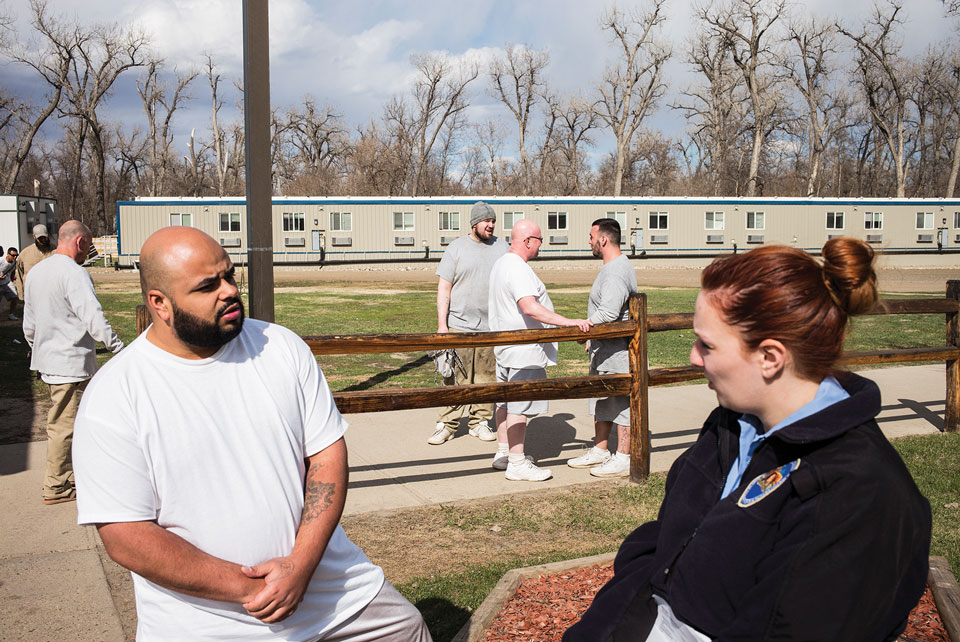
To discourage violence, North Dakota prison guards are encouraged to cultivate good relations with the inmates.
Andy Richter
That sentiment came up often in my conversations with corrections officials. “Those of us who are in the system are just tired of the mass incarceration,” says Rick Raemisch, Colorado’s prisons chief. His system of roughly 20,000 adult inmates phased out solitary confinement almost entirely “in less than a year and a half,” he told me. “You can put what we’ve done in any system.” In fact, roughly a third of state prison systems have embarked on plans to cut back on solitary.
Even some notoriously punitive states, such as South Carolina, Mississippi, Georgia, and Texas, are slashing incarceration rates after concluding that the old lock-’em-up policies are a pricey failure. In North Dakota, where falling oil and grain prices have put the state government in belt-tightening mode, I watched Bertsch shame state senators for the tough new criminal penalties they’d enacted. “I would say that you’ve handed the checkbook over to the judiciary,” she told them.
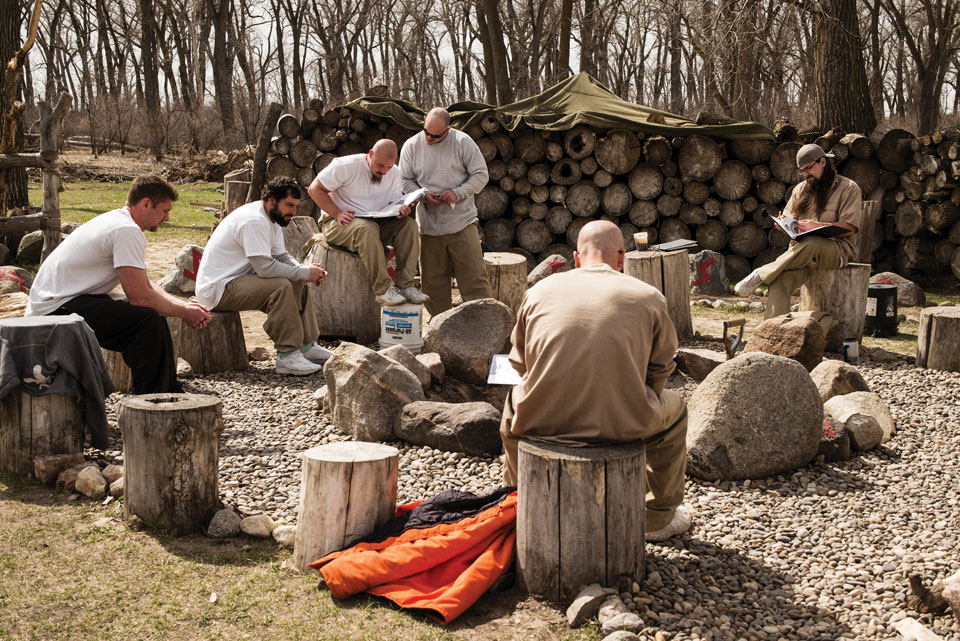
An Ásatrú study group at the Farm. While this Nordic religion is sometimes associated with white supremacy, materials are screened for “racial content.”
Andy Richter
Across the nation, the sheer number of men and women behind bars is at the root of most of the problems faced by corrections officials. “We’re not able to devote the resources to treatment,” explains Marc Levin, the executive director of Right on Crime, a Texas-based criminal justice reform initiative championed by the likes of William Bennett, Newt Gingrich, Grover Norquist, and Ralph Reed. While Attorney General Jeff Sessions may be nostalgic for 1990s-style criminal justice policies, these conservative luminaries have done an almost complete 180 on the topic. “There’s some point where the public appetite for punishment has been satisfied, and now we need to look at public safety with some kind of measurable data,” Levin says.
Whether this perspective survives the Trump era remains to be seen, but several people I spoke with credited the opioid epidemic for the conservative change of heart. “Incarceration and the criminal justice system are touching a lot of people, including poor people in rural areas, a lot of whom are white,” Levin says. One scenario, given Sessions’ pursuit of maximum penalties for federal crimes, is a growing divide between reform-minded state facilities, which hold more than half the nation’s 2.3 million prisoners, and an intransigent federal system.
Bertsch and Jackson are convinced that their quest to treat prisoners like human beings jibes well with their state’s conservative goals: Be nice. Be fiscally responsible. Be a good neighbor. “The most I can do with the Legislature,” Bertsch tells me, “is get them to understand that incarcerating more people is not a good investment. If we had the same incarceration rate as Norway, we would have the resources to do a really good job with the people in our system.”
“I’m not a liberal,” she adds. “I’m just practical.”
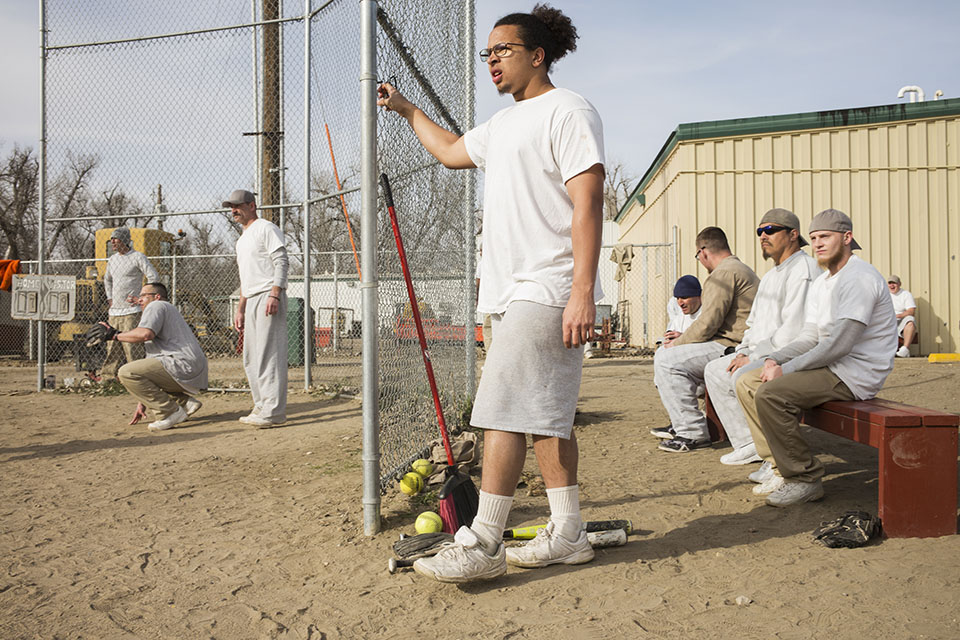
Inmates watch a softball game at the Farm. The prison league is highly competitive and plays throughout the summer, sometimes against other prison teams.
Andy Richter
